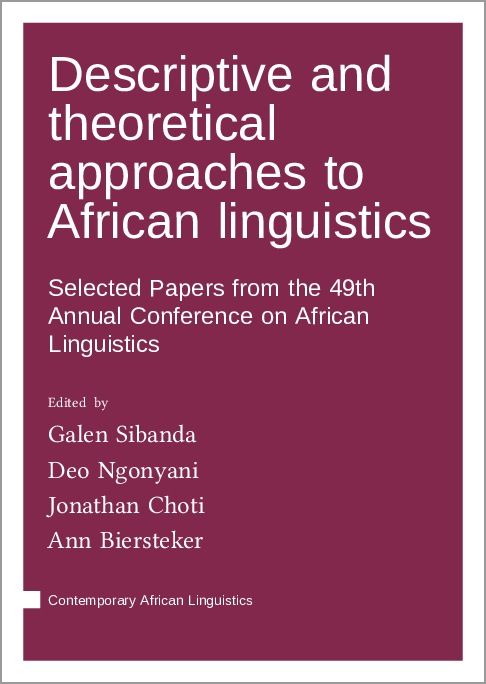We log anonymous usage statistics. Please read the privacy information for details.
Descriptive and theoretical approaches to African linguistics: Selected papers from the 49th Annual Conference on African Linguistics
Synopsis
Descriptive and Theoretical Approaches to African Linguistics contains a selection of revised and peer-reviewed papers from the 49th Annual Conference on African Linguistics, held at Michigan State University in 2018. The contributions from both students and more senior scholars, based in North America, Africa and other parts of the world, provide a glimpse of the breadth and quality of current research in African linguistics from both descriptive and theoretical perspectives. Fields of interest range from phonetics, phonology, morphology, syntax, semantics to sociolinguistics, historical linguistics, discourse analysis, language documentation, computational linguistics and beyond. The articles reflect both the typological and genetic diversity of languages in Africa and the wide range of research areas covered by presenters at ACAL conferences.
Chapters
-
Velar Tap in Dàgáárè
-
On the Ngbugu vowel system
-
Phonological adaptation of the Belgian French vowels in Kinshasa Lingala
-
The augment in Ekegusii and Haya
-
Learning Swahili morphology
-
Focus marking strategies in Igbo
-
Focus marking and dialect divergence in Līkpākpáln (Konkomba)
-
Edges and extraction: Evidence from Chichewa
-
A syntactic analysis of the cooccurrence of stative and passive in Kiswahili
-
Propositional attitude verbs and complementizers in Medumba
-
Overt subjects and agreement in Zulu infinitives
-
Obligatory controlled subjects in Bùlì
-
The pragmatics of Swahili relative clauses
-
Unifying prolepsis and cross-clausal cliticization in Lubukusu
-
Tense and aspect in Akan serial verb constructions
-
Counting mass nouns in Guébie
-
The future of the indigenous languages of Kenya and Tanzania
-
Discursive strategies for managing bad news: Exemplification from Akan (Ghana)
-
Lessons from the field: An insight into the documentation of Gurenɛ oral genres
-
Dialogue with ancestors? Documentation data from Akie in Tanzania
-
A phylogenetic classification of Luyia language varieties
-
Proto-Bantu reflexes in Dhaisu




